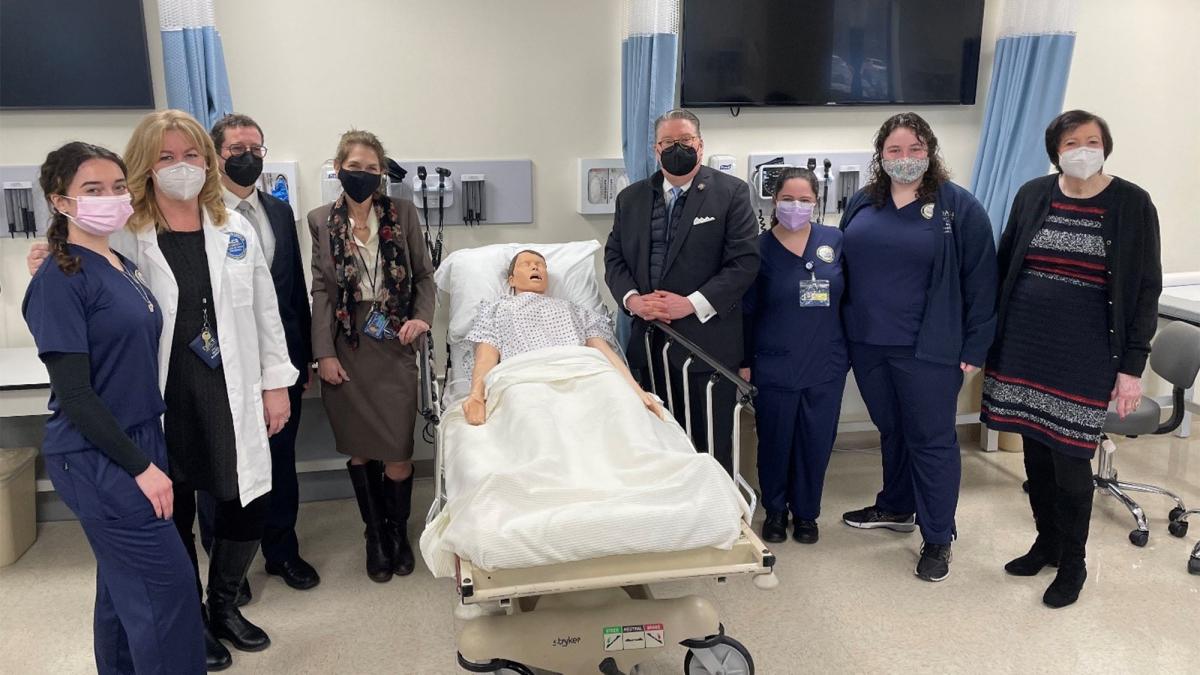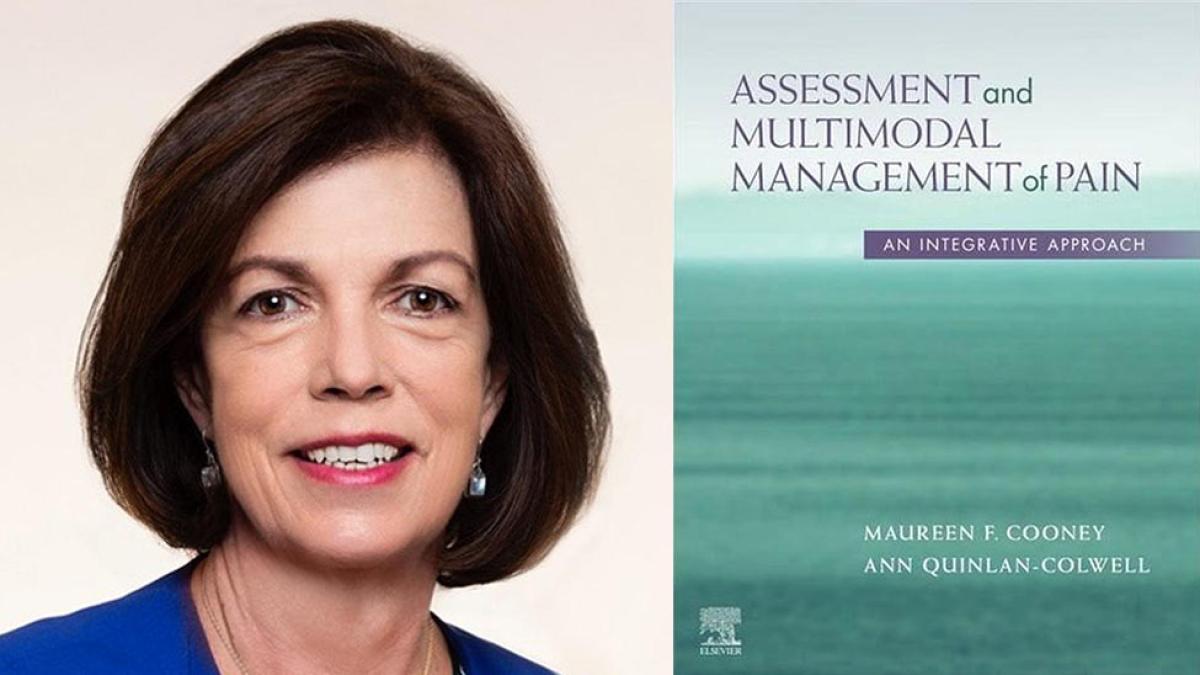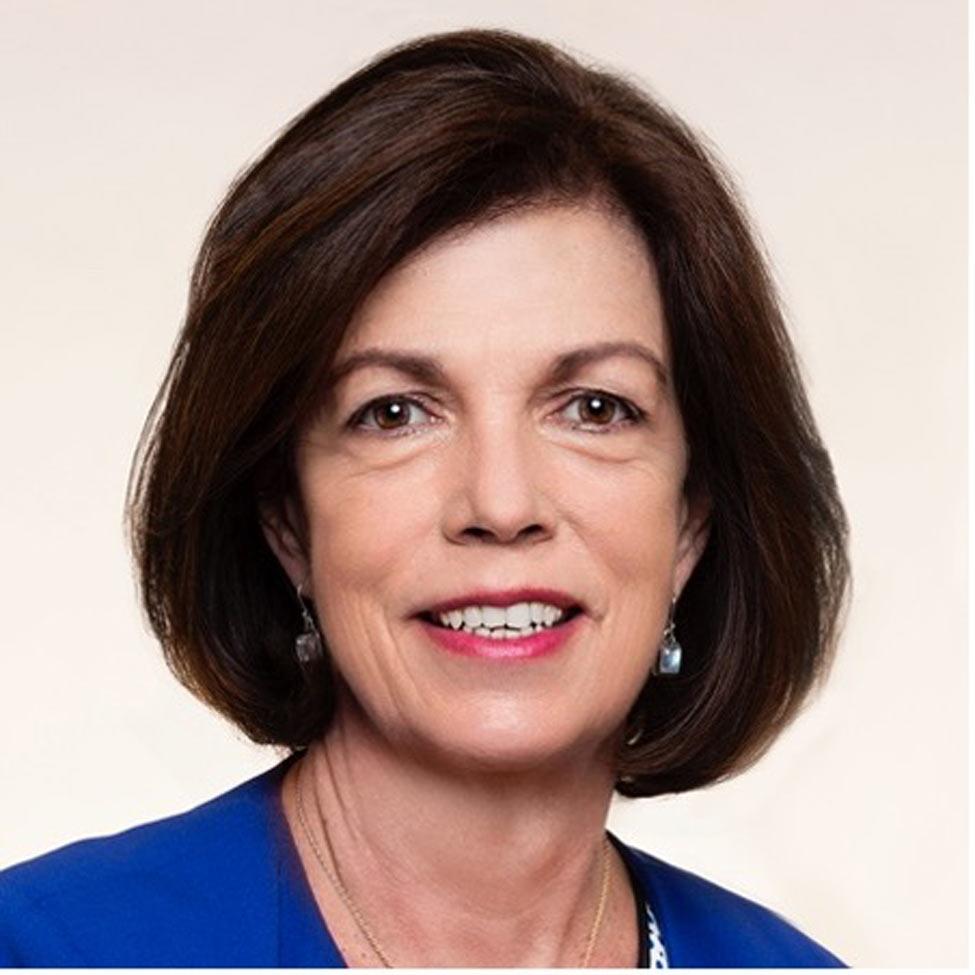Esports has arrived at Pace as our 15th varsity sport. Get your introduction to this booming industry, our new Esports director, and the students who have been passionately dedicated to the program since its days as a student club.
Leveling-Up in China: A Look into Chinese Gaming Culture
Internet addiction, the rise of esports, and stigma surrounding digital gaming in China. Pace professor Marcella Szablewicz examines how new communication technologies impact a growing culture shift.


As part of Pace University’s commitment to invest in and encourage scholarly work, many of our faculty at are conducting essential research alongside their usual instructing. Marcella Szablewicz, PhD, a Communications Studies professor at Pace’s NYC Campus, is one of them. Szablewicz has been studying a phenomenon since the early 2000s that may catch the attention of anyone who turns to the internet for relaxation or escapism. Her emphasis? The culture and stigma surrounding recreational internet usage in China.
“What would the internet mean for China, being an authoritarian country and one that represses a lot of personal freedoms? Many people speculated that the internet would be a democratizing force in China” she says, “However, there was also a lot of emphasis placed upon how people were going to use the internet to resist the government or engage in politics.” This generalized perspective about the Internet in China sparked Szablewicz’ interest as an undergraduate, motivating her to move away from western bias and dive deeper into how Chinese youth were actually using the internet in everyday life.
“I liken it to American bar culture because it was illegal for these teenagers to be going into internet cafes, so they would have to use fake IDs. Once they got in, it was a social party with everyone playing digital games.”
As the creator of New Communication Technologies and Moral Panic, a communications course at Pace, Szablewicz is well-versed in the concerns that come with new forms of communication technology and the fact that these fears have been consistent throughout history. In this particular case, it’s the Chinese government’s strong concerns about digital gaming leading to internet addiction. Concerns that are strong enough for China’s government to implement heavy internet restrictions for teenagers. Concerned parents have even resorted to sending their children to internet addiction “bootcamps,” where young people participate in military style drills or electroshock treatment to cure their addiction.
Ever since her frequent travels to China for field work, Szablewicz has made insightful discoveries about the youths’ reaction to the fear and stigma surrounding gaming.
“A lot of teenagers were rebelling against the pressure of intense schoolwork and academics, so they would escape to internet cafes to play digital games as a kind of pastime. It was a really interesting phenomenon.” She laughs, “I liken it to American bar culture because it was illegal for these teenagers to be going into internet cafes, so they would have to use fake IDs. Once they got in, it was a social party with everyone playing digital games.”
Though Szablewicz set out to observe trends in recreational internet use, she has also noticed a correlation with the simultaneous rise of esports, a professional competitive form of digital gameplay. Though this trend of elevating video gaming from a casual hobby to a competitive sport is worldwide. In fact, Pace just announced their own esports program, making these digital competitors part of Pace’s 15th varsity sport—China was actually one of the very first countries to deem esports a legitimate sport. What began as a form of escape for Chinese youth has now become a means of earning income. “Some teenagers were rising through the ranks of gaming to become competitive gamers and earning huge amounts of prize money from playing games,” she says. “Now there’s this tension between games as a source of rebellion and games as a potential career path.”
She also noticed that many young people had to maneuver their way around the “internet gaming” stigma: “A lot of the college students were going out of their way to distance themselves from being identified as an internet gamer because they’d be labeled as an addict, so instead they would align themselves closely with esports,” she recalls.
Throughout all her research, Szablewicz has discerned a societal significance to the stigmas and paradoxes surrounding gaming in China. “The thing that I find most significant is how ideas about what constitutes productive leisure tend to tell us a lot about a societies’ values and where those values are placed,” says Szablewicz.
“I’m really fascinated by ways in which youth leisure choices are often controlled by those in power, who are often older generations who don’t necessarily understand the leisure choices of youth. The idea of high culture is seen as worthwhile, but when it comes to popular culture among young people, it is denigrated and seen as useless or time wasting,” she says. “People who are in power are trying to keep young people from taking up their position in places of power and it’s kind of a repetitive pattern.”
However, Szablewicz’s research reveals that no matter what barriers are placed, younger generations tend to find a way to innovate. Whether it is through sneaking into internet cafes after school, or carving out their own career paths, the focus on gaming in China reveals the resilience of these young gamers.
Interested in learning more about China’s gaming culture? Check out Marcella Szablewicz’s new book Mapping Digital Game Culture in China.
More from Pace
College of Health Professions Associate Professor and occupational therapist John Damiao is leveraging technology to make substantial improvements to the lives of wheelchair users through research, aiming to increase comfort and reduce injuries.
Finance Professor PV Viswanath knows that understanding finance goes beyond just dollars and cents—financial markets have a real-world impact on the disadvantaged among us. Read how he’s teaching a new generation of finance professionals to tackle wealth and income inequalities.
Senator Pete Harckham Tours Pace University’s Clinical Training Labs to Discuss Solutions to Nursing and Healthcare Worker Shortage
"The stress and strain of the pandemic have exacerbated the existing shortage of nurses in New York State,” said Senator Harckham. “I am thrilled to be able to spend time with this new generation of nurses at Pace University, who will greatly benefit the workforce. It is critical that we encourage and reward people to join the nursing profession, which needs rejuvenation and reinforcements."


College of Health Professions’ Faculty & Staff outline ways to increase critical staff pipeline.
Pace University today hosted New York State Senator Pete Harckham on a tour of its clinical simulation labs and held a roundtable discussion on addressing New York’s critical need for nurses and other primary care professionals.
In visiting Lienhard Hall, home to Pace’s College of Health Professions and its Lienhard School of Nursing, Harckham joined faculty, staff, and nursing students – all of whom shared their experiences in the field and discussed ways to address the nursing shortage and expand the healthcare worker pipeline, a staffing issue that has been exacerbated by the COVID-19 pandemic.
"The stress and strain of the pandemic have exacerbated the existing shortage of nurses in New York State,” said Senator Harckham. “I am thrilled to be able to spend time with this new generation of nurses at Pace University, who will greatly benefit the workforce. It is critical that we encourage and reward people to join the nursing profession, which needs rejuvenation and reinforcements."
“Simulation is an evidence-based component of training of multiple health professions that has been proven to enhance student learning, confidence, clinical skills and ultimately improve the quality of patient care,” said Marcus Tye, dean of Pace University’s College of Health Professions. “Incentivizing preceptors and expanding the use of simulation in healthcare training will help increase the supply and quality of our future health workforce.”
Nurses provide 90% of all care to patients in hospitals, and by 2030 there is a projected shortage of more than 39,000 registered nurses in New York, according to the New York State Department of Health. The challenge is so great across the country that The American Nurses' Association called for the Department of Health and Human Services to declare a national nurse staffing crisis.
Further complicating the situation is that many schools are limited in the number of licensed nurses they can prepare, despite great interest in the field, because of a shortage of clinical training experiences.
“I have met with numerous chief nursing officers from NYC and Westchester County healthcare agencies, all of whom voiced deep concern about current and pending severe staffing shortages,” said Rhonda Maneval, vice dean for the College of Health Professions and the Lienhard School of Nursing at Pace University, who testified before the State Legislature on the nursing shortage issue. “These meetings focused on ways our school could provide more practice-ready graduates. The good news is that, despite the pandemic, or because of it, people want to become nurses. By working together, we can address this crisis head on.”
Pace University faculty have been leaders in advocating for ways to prepare and educate more people for a career in healthcare through a series of measures and proposals including providing practitioners with tax credits as well as passage of a bill that would recognize a portion of a student’s time spent in a controlled simulation laboratory count toward their required clinical hours.
“When it comes to preparing nurses for a complex work environment, far too many healthcare facilities and schools are in a catch-22 situation: They have a shortage of nurses and space to dedicate to student clinical experiences, and as a result, schools are therefore limited in the number of healthcare workers they can prepare for the workforce,” said Dr. Harriet R. Feldman, chief wellness officer, professor and dean emerita of the College of Health Professions and the Lienhard School of Nursing. “Through smart legislation and policy, however, nursing schools and host institutions can work together to increase the pipeline of workers ready to respond to emergencies.”
For Cristina DeRose, a senior majoring in nursing, classes that take place in a simulation lab are productive and mirror real life emergencies. “With simulation, you know every student has gotten the experience necessary to work in the field.”
Senior Alexis Ninonueva agreed: “Simulation is especially helpful. Time in the sim lab gives you confidence and Pace is doing a great job preparing us for the profession.”

About Pace University
Since 1906, Pace University has educated thinking professionals by providing high quality education for the professions on a firm base of liberal learning amid the advantages of the New York metropolitan area. A private university, Pace has campuses in New York City and Westchester County, New York, enrolling nearly 13,000 students in bachelor’s, master’s, and doctoral programs in its Dyson College of Arts and Sciences, Lubin School of Business, College of Health Professions, School of Education, School of Law, and Seidenberg School of Computer Science and Information Systems.
About College of Health Professions
Established in 2010, the College of Health Professions at Pace University offers a broad range of programs at the bachelor, master, and doctoral levels. It is the College’s goal to create innovative and complex programs that reflect the changing landscape of the health care system. These programs are designed to prepare graduates for impactful careers in health care practice, health-related research, or as educators, and equip graduates to work in health policy and global health fields. Students in clinical programs receive hands-on training in the College’s interprofessional Center for Excellence in Healthcare Simulation and have the opportunity to apply their developing skills in real-world settings at many of the regions' leading clinical facilities. The College is currently comprised of several growing and important areas of study, which include Nursing, Physician Assistant, Communication Sciences and Disorders, Nutrition and Dietetics, Occupational Therapy, and Health Science. Our vision is to be recognized for our innovative leadership in education, practice, scholarship, and service to improve health and the health professions. Our mission is to educate and challenge diverse students for the health professions to be leaders, innovators and lifelong learners who will positively impact local, national, and global health.
Rockefeller Donates Chinese Oil Painting to Pace University
Mr. and Mrs. Steven Rockefeller Jr., longtime residents of the Hudson Valley, philanthropists, and supporters of the arts, have donated a beautiful oil painting by a celebrated contemporary Chinese artist to Pace University. The painting, entitled Sunflower by Huang Yue, will be on display in a secure location at Pace's Mortola Library. It was presented to President Marvin Krislov on Feb. 10, 2022 at The Choate Art Gallery on the Pleasantville campus.
10 Best Car Insurance Companies of 2022
Larry Chiagouris: Lubin Marketing Professor Larry Chiagouris provides insights on the best car insurance for WalletHub: Customer reviews always are more important than low rates because reflected in customer reviews are the rates of the insurance company. Stated another way, low rates are not of much value if the service that is provided is inferior.
Randi Priluck: Professor of Marketing and Associate Dean, Undergraduate Studies, Lubin School of Business, Pace University. The car insurance industry spends significant dollars on television to communicate their messages to potential buyers. Progressive and Geico are the top two leading national advertisers spending on television advertising.

Alec Baldwin Civil Suit
Haub Law Professor Randolph McLaughlin was featured on The Today Show in Australia regarding the wrongful death lawsuit filed against Alec Baldwin and other film producers.
Commentary: The promise and potential of New York's Green Amendment
Op Ed: Katrina Fischer Kuh is Haub Distinguished Professor of Law at the Elisabeth Haub School of Law at Pace University. Nicholas A. Robinson is a professor of law and professor on the environment at the Elisabeth Haub School of Law at Pace University. It has been too easy to miss New York’s signature human rights success: By a margin of 2 to 1, voters in November 2020 amended their state constitutional Bill of Rights to ensure that “Each Person shall have a right to clean air and water, and a healthful environment.”
I'm a college president. Teaching a 101-level course reminded me how important compassion is right now.
In their first semester at Pace University, all incoming undergraduates take a class we call UNV 101, an introduction-to-college course that teaches them how to be effective students and helps them map their Pace Path, a plan that will guide them through their four years with us and bring them to graduation ready to achieve their career goals. Each year, I teach a section of UNV 101, and I find it a valuable window into the student experience.
Pace Alumna and Faculty Receive AJN 2021 Book of the Year Award
Dr. Cooney recognizes that "There is not enough time in any basic professional educational program to provide the depth of content necessary to address patients' needs. There are many misconceptions held by patients and health care providers that interfere with appropriate pain care. The purpose of this book is to provide a resource for all health care providers to aid in filling the gap."


Pace University's College of Health Professions and Lienhard School of Nursing Clinical Associate Professor Maureen Cooney published, Assessment and Multimodal Management of Pain: An Integrative Approach, which she co-authored with Ann Quinlan-Colwell from NC. This book was recognized by the American Journal of Nursing (AJN) for the 2021 Book of the Year Awards for Med-Surgical Nursing and Advanced Practice Nursing. CHP's Dr. Elsa Wuhrman also contributed her expertise and knowledge to the book by writing a chapter.
Through her full-time position at a major medical center as a Pain Management Nurse Practitioner, Dr. Cooney is aware of the knowledge gap that exists among many health care providers in pain care for people across their lifespan. She says, "There is not enough time in any basic professional educational program to provide the depth of content necessary to address patients' needs. There are many misconceptions held by patients and health care providers that interfere with appropriate pain care. The purpose of this book is to provide a resource for all health care providers to aid in filling the gap."
The writing process was a challenging yet rewarding journey for Dr. Cooney. She not only learned more about herself but also about the importance of an integrative approach to pain care. An unexpected obstacle for Dr. Cooney was working on her typing skills. "I never should have skipped that typing class in high school!" She also discovered having an interprofessional approach to pain care as professionals from other disciplines, including physical and occupational therapies and pharmacists, contributed to the book.
Dr. Cooney is hopeful that this book will inspire her current and future students. "Pain is far more than a number on a 0-10 numeric rating scale, and pain management is far more complex than simple medication administration."
"Pain is far more than a number on a 0-10 numeric rating scale, and pain management is far more complex than simple medication administration." - Dr. Cooney
Her dream is to motivate and influence others to learn more about pain management and recognize that this is a deep and rich area of specialization for health care providers. "I also hope that my current and future students would recognize that when they find their passion, spending time and energy exploring that area of passion is not work; it is an opportunity for personal and professional fulfillment," expressed Dr. Cooney.
Dr. Cooney is a three-time Pace alum from the Lienhard School of Nursing, receiving a bachelor's and master's degree in nursing, and a Certificate of Advanced Graduate Studies in Family Nurse Practitioner (FNP). Additionally, she completed the Doctor of Nursing Practice program at Case Western Reserve University. Dr. Cooney has been an adjunct faculty member in the Lienhard School of Nursing for 25 years, and for the past 20 years she has taught and supervised students in the FNP program. Dr. Cooney and Dr. Wuhrman are also Clinical Co-Coordinators for the FNP program.

Dr. Cooney acknowledged that Dr. Wurhman was most instrumental in encouraging her to specialize in pain management. In her chapter, Dr. Wurhman focused on helping students to, "Understand that, as the American Society for Pain Management purports: every nurse is a pain management nurse." She hopes that this book exemplifies that principle by enabling nurses to gain confidence and apply their knowledge to all patients.
Order a copy of Assessment and Multimodal Management of Pain
The promise and potential of New York’s Green Amendment
How will New York’s new constitutional Bill of Rights guarantee each person the right to clean air and water, and a healthful environment?


